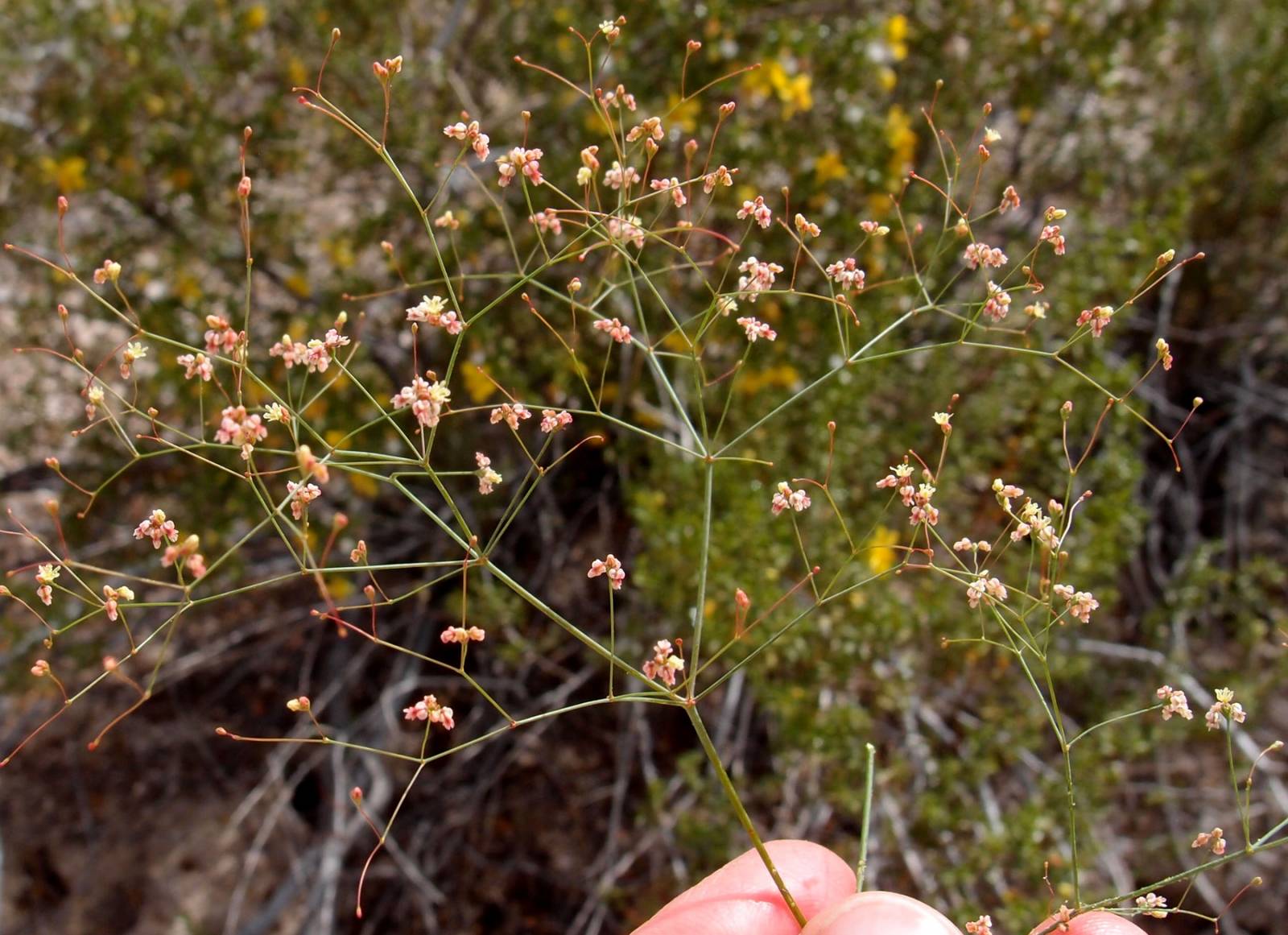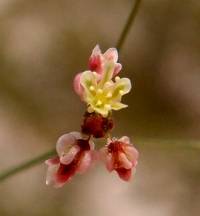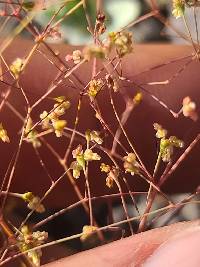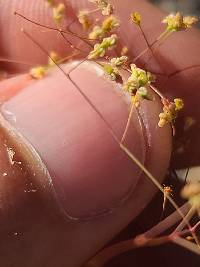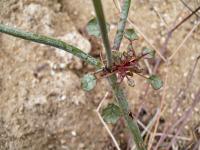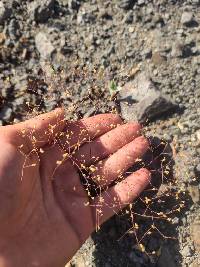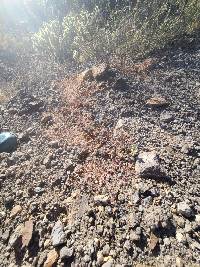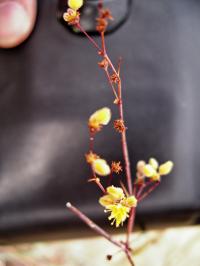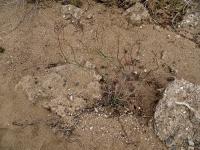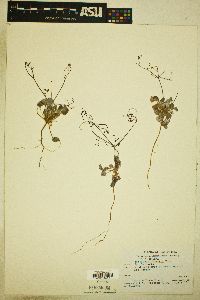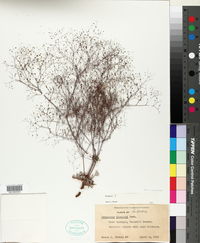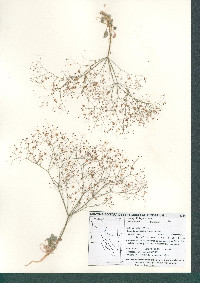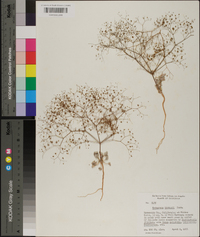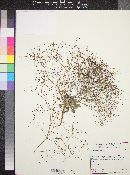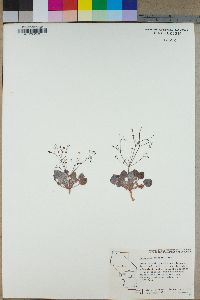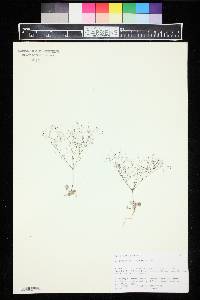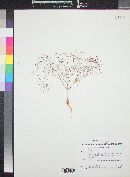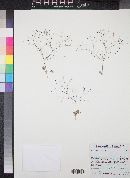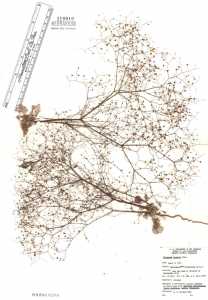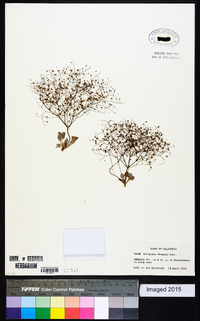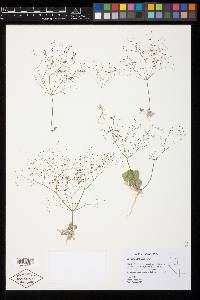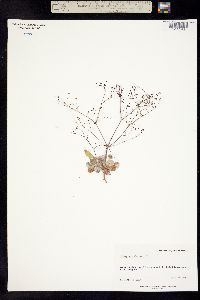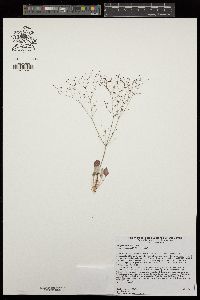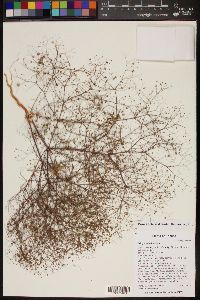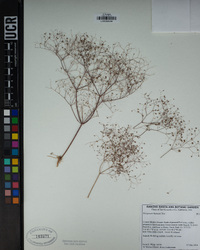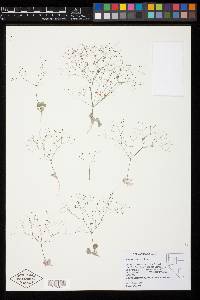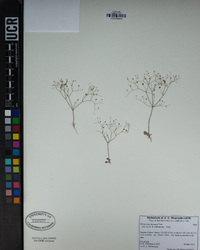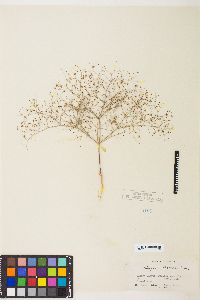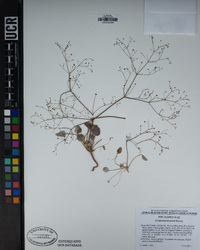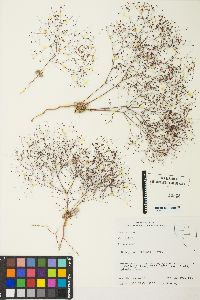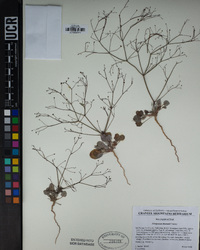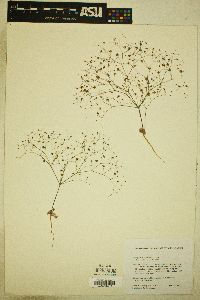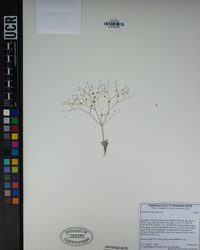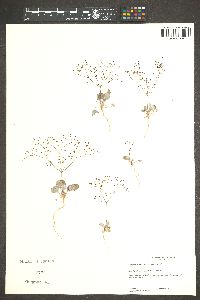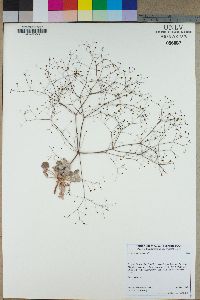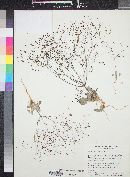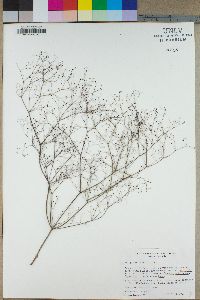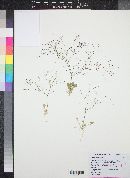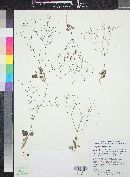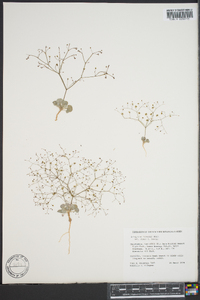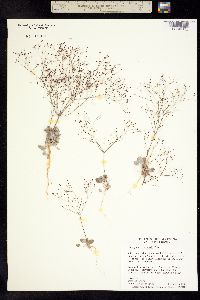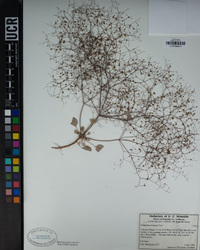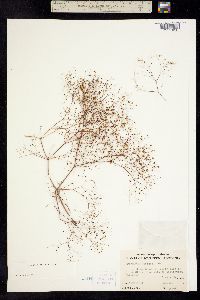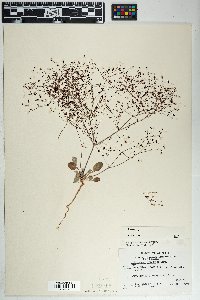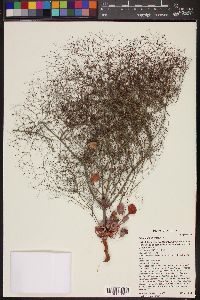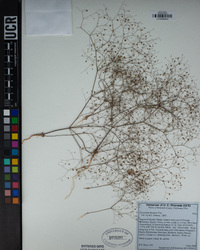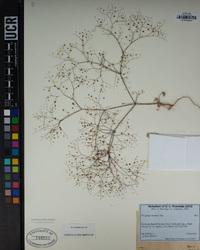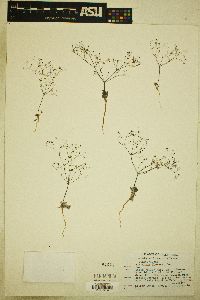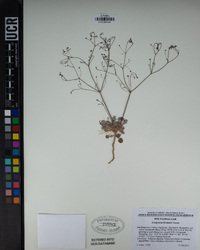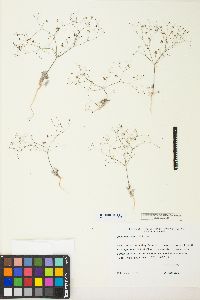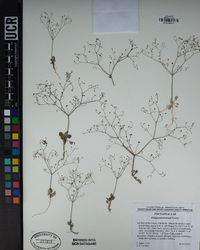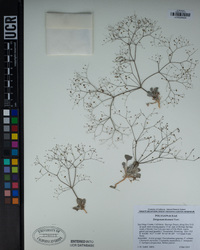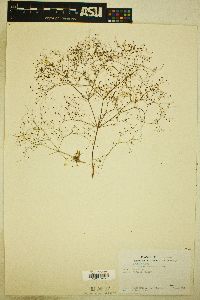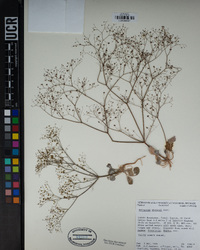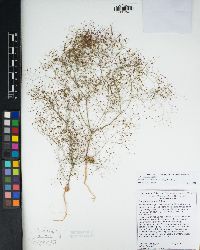
|
|
|
|
Family: Polygonaceae
Thomas' buckwheat, more...Thomas' Wild Buckwheat, Thomas buckwheat
[Eriogonum minutiflorum] |
Herbs, spreading, annual, 0.5-3 dm, glabrous, greenish, sometimes grayish or reddish. Stems: caudex absent; aerial flowering stems erect, solid, not fistulose, 0.2-1 dm, glabrous except for few glands proximally. Leaves basal; petiole 0.5-3 cm; blade round to round-reniform, 0.5-2 × 0.5-2 cm, densely white-tomentose abaxially, floccose to glabrate and greenish adaxially, margins plane. Inflorescences cymose, open to diffuse, 5-25 × 5-25 cm; branches glabrous; bracts 3, scalelike, 1-2.5 × 1-2 mm. Peduncles capillary, spreading to slightly recurved, straight or curved, capillary, 0.5-3 cm, glabrous. Involucres turbinate-campanulate, 0.6-1.2 × 0.7-1.3 mm, glabrous; teeth 5, erect, 0.4-0.6 mm. Flowers 0.8-1 mm in early anthesis, becoming 1.2-2 mm; perianth yellow in early anthesis, becoming white to rose, short-hispidulous; tepals dimorphic, those of outer whorl cordate, becoming saccate-dilated proximally, those of inner whorl spatulate; stamens included, 0.5-0.9 mm; filaments mostly glabrous. Achenes brown to dark brown, usually lenticular, 0.8-1 mm, glabrous. 2n = 40. Flowering year-round. Sandy flats, washes, and slopes, saltbush, greasewood, creosote bush, and sagebrush communities, pinyon and/or juniper woodlands; -70-1200(-1400) m; Ariz., Calif., Nev., Utah; Mexico (Baja California, Sonora). Eriogonum thomasii is common to abundant and even weedy throughout its range on the Mojave and Sonoran deserts in Arizona, southeastern California, southern Nevada, and southwestern Utah. The distinctive swollen bases of the outer tepals are easy to observe in fruiting material but not always obvious in early anthesis.
FNA 2005, Jepson 2012, Kearney and Peebles 1969 Duration: Annual Nativity: Native Lifeform: Forb/Herb General: Herbaceous annuals, to 30 cm tall, stems erect and spreading, openly branching, without a caudex, herbage glabrous except for few a glands near the base. Leaves: Alternate or whorled, mostly basal and small, blades 0.5-2 cm long, round to round-reniform, densely white-tomentose below, woolly-tufted to glabrous and greenish above. Flowers: Yellow then white to rose, the flower-like perianth 1-2 mm high, the perianth outer lobes cordate with swollen bases (with age), inner lobes spoon-shaped, surfaces hairy, stamens included, to 1 mm long, filaments mostly glabrous, inflorescences open and diffuse, 5-25 cm long, with glabrous surfaces, the peduncles thread-like and spreading to recurved and 0.5-3 cm long with glabrous surfaces, also subtended by glabrous, turbinate-campanulate involucres to 1 mm long and to 1.5 mm wide, with 5 erect, minute teeth to 0.5 mm long. Fruits: Achenes brown to dark brown, usually lenticular, to 1 mm long, with glabrous surfaces. Ecology: Found on sandy soils on flats, washes, and slopes, and in saltbush, greasewood, creosote bush, and sagebrush communities, pinyon and/or juniper woodlands, from 250-4,500 ft (76-1372 m); flowering year-round. Distribution: Arizona, California, Nevada, Utah; Mexico. Ethnobotany: Specific uses for this species are unknown, but other species in the genus have uses; plant used for severe pain in hips and back, hemorrhage, menstruation medicine, to expedite childbirth, for internal pains, especially stomach pain, general indisposition, syphilis, infusion of plant taken to shrink the uterus and reduce dysmenorrhea, infusion of flowers used as an eyewash, to clean out the intestines, infusion of flowers and leaves used as a mouthwash for pyorrhea, leaves, growing near the root, used as a physic, salve of dry leaves or leaf ash mixed with grease used for swellings, decoction of roots taken for diarrhea, heart medicine, plants used in steambath for rheumatism, stiff and aching joints and muscles, and shoots and seeds used for food, stems used to brush off spines on fruits. Synonyms: None Editor: LCrumbacher2012 Etymology: Eriogonum comes from the Greek erion, "wool," and gonu, "joint or knee," in reference to the hairy or woolly joints of some of the species of the genus, and thomasii is named after Major George Henry Thomas (1816-1870), stationed at Fort Yuma about 1850, and later as a general a Civil War hero called the Rock of Chickamauga. |
This project was made possible in part by the Institute of Museum and Library Services [MG-70-19-0057-19].
Powered by Symbiota

